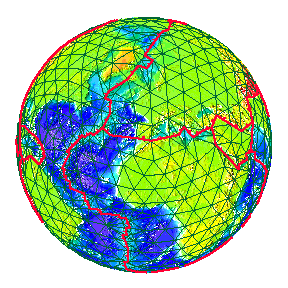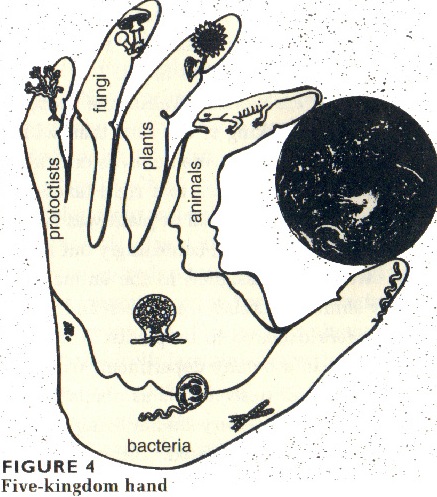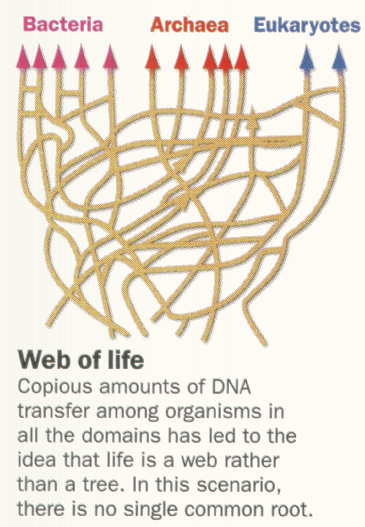 An Essay
An Essay
by Joseph Siry
Symbols are emblematic expressions of intangible qualities that also represent the influence of real things on our imaginations; any material object representing something influential but insubstantial or abstract, such as the cross †, or the equals sign '=' referring to an implied equity, or the zero, ø standing for the absence of a quantity. Symbols reveal our often unexpressed biases in beliefs or ideologies.
 We are a sentient creature that symbolically represents
the world so that we may compare an impression with other people's perceptions.
By contrast and comparison each creature conveys information about her
surroundings to others. Our skillfully articulate creation of language requires humans to think with a rich symbolic imagery about the world
we encounter. Expressing the depth of that encounter with the world and
its various living things is one purpose of telling one another stories
about nature. Yet we must be careful to use symbols that adequately convey
the complex conditions of nature on whom we depend as people, families and
social groups.
We are a sentient creature that symbolically represents
the world so that we may compare an impression with other people's perceptions.
By contrast and comparison each creature conveys information about her
surroundings to others. Our skillfully articulate creation of language requires humans to think with a rich symbolic imagery about the world
we encounter. Expressing the depth of that encounter with the world and
its various living things is one purpose of telling one another stories
about nature. Yet we must be careful to use symbols that adequately convey
the complex conditions of nature on whom we depend as people, families and
social groups.
 On a journey one needs a guide and the great books are
abiding guides for our steps down the entropy-ridden tunnel of time that
wraps around our mortal experience. The indisputably original thinkers whose minds apprehended an entirely new vision of reality have left to
us an unbelievably rich legacy of thoughts, analyses, and methodical proofs.
They reveal our living earth as a fundamental, yet anomalous place in
an otherwise dark, remote universe of 100 billion galaxies. These are
clusters of stars both larger and smaller than our devoted sun, are beacons
of radioactive energy scattered across the immense curvature of space.
The solar system's width is dwarfed by the milky-way galaxy and all but
lost in this expanding menagerie of gas fusion engines called stars. Suns
and stars explode providing the chemicals of existence; essential atoms
in the molecules of life.
On a journey one needs a guide and the great books are
abiding guides for our steps down the entropy-ridden tunnel of time that
wraps around our mortal experience. The indisputably original thinkers whose minds apprehended an entirely new vision of reality have left to
us an unbelievably rich legacy of thoughts, analyses, and methodical proofs.
They reveal our living earth as a fundamental, yet anomalous place in
an otherwise dark, remote universe of 100 billion galaxies. These are
clusters of stars both larger and smaller than our devoted sun, are beacons
of radioactive energy scattered across the immense curvature of space.
The solar system's width is dwarfed by the milky-way galaxy and all but
lost in this expanding menagerie of gas fusion engines called stars. Suns
and stars explode providing the chemicals of existence; essential atoms
in the molecules of life.
Fortunate are we to find ourselves in the midst of
a water-cooled and gas  heated planet that harbors more life in a few meters
of earth, air and water than anywhere else in the earth's gravitational
mass. This is because the molten interior of nickel and iron surfacing
as magma in volcanoes is far too hot and nutrient poor to breed life.
Where the lava or extruded magma meets the sea an explosion of heat and
an opportunity for life in the frigid waters of the deep emerges. The
boiling and roiling guts of the planet spew forth enriching the seas with
a potential haven within which life might thrive. "And his spirit moved
across the face of the deep." Buried in the primal stress of cold
dark water meeting the viscously hot yet congealing lava, life thrives
in the frigid lightless depths of a global ocean. There bacteria eat away
through the nutrient rich sulfur vents where submarine volcanoes rise
up from the ebony depths of the otherwise stillborn seas.
heated planet that harbors more life in a few meters
of earth, air and water than anywhere else in the earth's gravitational
mass. This is because the molten interior of nickel and iron surfacing
as magma in volcanoes is far too hot and nutrient poor to breed life.
Where the lava or extruded magma meets the sea an explosion of heat and
an opportunity for life in the frigid waters of the deep emerges. The
boiling and roiling guts of the planet spew forth enriching the seas with
a potential haven within which life might thrive. "And his spirit moved
across the face of the deep." Buried in the primal stress of cold
dark water meeting the viscously hot yet congealing lava, life thrives
in the frigid lightless depths of a global ocean. There bacteria eat away
through the nutrient rich sulfur vents where submarine volcanoes rise
up from the ebony depths of the otherwise stillborn seas.
Life has grabbed a stubborn and uncommonly tenacious hold
on the character and descendants of this planet's myriad assembly of living creatures. From single cells, to flowering  plants the variety of natural
living things has been symbolically rendered into five great domains or
kingdoms of life. Depending on how they acquire a living, their complexity
and their formal distinctions, these five kingdoms are like the individual
fingers of a working hand and represent this planet's life. Bacteria and
plants make up the forefinger and thumb of this dexterous hand. Fungus
is the middle finger, single celled plants or animals the ring finger,
and multi-cellular animals are the pinkies. The irony of this hand of
nature is that the smallest, most exposed finger represents the enormous
range of different animals that seem to overwhelm our ideas about what
makes up nature. Animals appeal to us because we are one of their kith
and kin. The world of animals rests on a mightily complex and majestically
sublime stage or foundation of bacteria, fungi and plants. This symbol
--the hand of life- conveys a new framework or an ecological perspective because life on earth functions in unison.
plants the variety of natural
living things has been symbolically rendered into five great domains or
kingdoms of life. Depending on how they acquire a living, their complexity
and their formal distinctions, these five kingdoms are like the individual
fingers of a working hand and represent this planet's life. Bacteria and
plants make up the forefinger and thumb of this dexterous hand. Fungus
is the middle finger, single celled plants or animals the ring finger,
and multi-cellular animals are the pinkies. The irony of this hand of
nature is that the smallest, most exposed finger represents the enormous
range of different animals that seem to overwhelm our ideas about what
makes up nature. Animals appeal to us because we are one of their kith
and kin. The world of animals rests on a mightily complex and majestically
sublime stage or foundation of bacteria, fungi and plants. This symbol
--the hand of life- conveys a new framework or an ecological perspective because life on earth functions in unison.
 Animals are eukaryotes (like we, the plants and fungi are) at the mercy of climatic and geographical conditions. But we are even more subject to limitations imposed upon us
all by the creatures on whom we depend for food (prey), fuel (oxygen),
fiber (cellulose), and fodder (hay). The world obviously does not appear
to be a functioning hand but the five kingdoms of life is the truly "hidden
hand" in the symbolic imagery that is needed to reformulate our vision
of the world. This revolution in our story about nature requires us to
redefine and articulate our duties to its survival. It should inform us
of our debt to this vast experience of life on a remote planet orbiting
a tiny star in a distant, tangential arm of the lavish Milky Way galaxy.
Animals are eukaryotes (like we, the plants and fungi are) at the mercy of climatic and geographical conditions. But we are even more subject to limitations imposed upon us
all by the creatures on whom we depend for food (prey), fuel (oxygen),
fiber (cellulose), and fodder (hay). The world obviously does not appear
to be a functioning hand but the five kingdoms of life is the truly "hidden
hand" in the symbolic imagery that is needed to reformulate our vision
of the world. This revolution in our story about nature requires us to
redefine and articulate our duties to its survival. It should inform us
of our debt to this vast experience of life on a remote planet orbiting
a tiny star in a distant, tangential arm of the lavish Milky Way galaxy.


